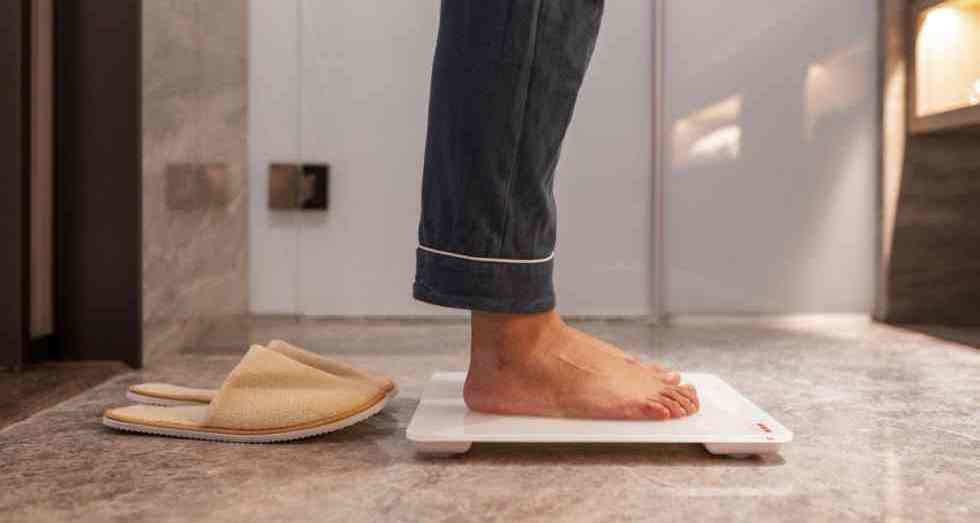Straight to the Point
The best Instant Pot is the Instant Pot Pro. It performs well and has nice features like a steam release switch and handles on its cooking pot. Our budget-friendly pick is the Instant Pot Duo Plus 9-in-1.
Instant Pot has become synonymous with a type of electric appliance more correctly known as a “multi-cooker” (a fancy electric pressure cooker with some extra functionality). Similar to how Xerox has become the de facto term for copy machines, Instant Pot has become the most well-known electric multi-cooker, even though plenty of other companies make electric multi-cookers, too. While we don’t think Instant Pots should be considered in a vacuum (just as reviews of facial tissue shouldn’t be limited to just Kleenex), the fact of the matter is there are so many Instant Pot models that we think it’s worthwhile to sort through them. This review, then, is our look at everything Instant Pot offers to help you weigh those options, but it’s only part of the larger question of what kind of pressure or multi-cooker you should buy, which we answer in a separate review.
If you're going to get an Instant Pot, you have more than 26 options (at the time of publication), and not including ones sporting special edition colors, floral patterns, and Star Wars designs. So which one should you get? There are three sizes available, but for the sake of consistent testing, we decided to stick with the middle-of-the-road (and most popular) 6-quart capacity models. We chose five models that claim to perform nuanced, helpful tasks, replacing other kitchen appliances. Here's a detailed look at the most useful features, which upgrades we found to be worthwhile, which ones fail to add real value, and ultimately which model Instant Pot we think is worth buying.
The Winners, at a Glance
The Best All-Around Instant Pot: Instant Pot Pro
:max_bytes(150000):strip_icc()/81rxrMrhr5L._AC_SL1500_-dbac463292124a4ba16fa4a86cb8f4de.jpg)
Instant Pot Pro 10-in-1 Pressure Cooker
This model worked the quickest, browned and sautéed well, and had helpful added features that made it a stand-out.
The Best Budget-Friendly Instant Pot: Instant Pot Duo Plus
:max_bytes(150000):strip_icc()/InstantPot-5b6b35c746e0fb0050465ffc.jpg)
Instant Pot Duo Plus 9-in-1 Programmable Electric Pressure Cooker
If you're willing to sacrifice some cooking and usability features, then the Instant Pot Duo Plus is a good pick and clocks in at about $80.
What Is an Instant Pot?
An Instant Pot is an electric pressure cooker, sometimes called a multi-cooker. You can use any electric pressure cooker recipe in these machines—you don't need a recipe formulated specifically for an Instant Pot. (Frankly, you can use most regular pressure cooker recipes as well, though you'll have to know a few basic rules of adaptation if the recipe doesn't offer specific instructions.) However, since it takes some time to figure out how to use and navigate the controls of each model, your success with any given recipe will depend on your familiarity with the model you own.
Electric multi-cookers usually come with “low” or “high” pressure cooking settings, but these aren't regulated terms. Instant Pots, for example, reach slightly lower PSI (pounds per square inch) compared to comparable "low" and "high" settings on many stovetop pressure cooker models; this won't always affect how a recipe turns out, but it can.
The appeal of electric multi-cookers is twofold. First, they self-regulate their pressure level, meaning you don’t have to babysit them and periodically adjust the level of heat produced by the burner, as you do with a stovetop pressure cooker (plus they free up that stovetop burner for other stuff). Second, as the name indicates, they have other functions: slow cook (however, we don’t recommend using multi-cookers as slow cookers), sauté, steam, rice/grain, yogurt (we haven’t been wow-ed by this function, either), and warm. Newer Instant Pot models claim to perform additional functions, like cake-making, air-frying, sous vide, sterilizing, and pressure canning (although we also don’t recommend using electric pressure cookers for canning). What an electric multi-cooker does really well is it allows even the novice home cook to set-it-and-forget-it and enjoy relatively hands-off cooking with confidence.
The Best Pressure Cookers and Multi-Cookers
The Critiera: What We Look for in an Instant Pot
The most useful function of an Instant Pot is its ability to pressure cook, so you want to get a model that quickly comes to pressure. Since many pressure cooker recipes start with a searing or sautéing step, it can help to have an Instant Pot with inner pot stability, so the pot doesn’t spin while you’re cooking. You want to know what’s going on inside your machine while you’re cooking, so an easy-to-read progress bar is super helpful. Some additional functions, like being able to use your Instant Pot for not-very-precise sous vide cooking, are sometimes welcome, but others, like the cake-baking function included in some models, we don't find particularly attractive. However, if the Instant Pot model advertises it can do those functions, it should do them passably well.
Why You Should Trust Us
Serious Eats has long promoted the benefits of stovetop and electric multi-cookers, but we are not Instant Pot evangelists. I personally have now been living with these five machines for over a month—they have taken up residence in my life, and we are currently in an intimate and complicated relationship, sprawling across every inch of my kitchen counter.
I am a seasoned cook and pretty darn familiar with following a recipe. I went to both culinary and pastry school and developed and tested recipes at America’s Test Kitchen for five years (after spending a decade in restaurant kitchens throughout the US and Italy). I’m able to use my trained culinary background to recognize good outcomes and know what matters in the kitchen, and my Instant Pot agnosticism makes it easy to assess the usability of these machines.
The Testing
For this review, we wanted to test the “extra” functions, like cake-making and sous vide cooking, as well as the updated inner pot design. We tested the same recipe in each machine one after another, keeping variables like ingredients and timing stable and consistent from test to test. By photographing stages of each recipe for comparison and tasting the outcomes side-by-side, we came to some conclusions.
Test 1: Cake
:max_bytes(150000):strip_icc()/silo-whitebackground-rd2-e850a5efe6df43c4a44cb78f96935439.jpg)
Serious Eats / Katie Leaird
The test: Yes, really. Cake in an Instant Pot. The internet says it’s a real thing, but gosh, it's hard to believe. Since we haven’t developed cake recipes specifically for pressure cookers, we used the chocolate cake recipe from the Instant Pot website. We prepared the batter as written, but portioned it into 6-inch cake pans—the official recipe was, unfortunately, shortsighted, as the required 8-inch springform pan can only fit into the Duo Plus; the other models were about an inch too small to accommodate the pan listed in the directions.
To “bake” (or, rather, steam) the cake, we then placed the aluminum foil-covered cake pan on the steamer rack and poured 1 cup of water into the bottom of the inner pot. We used the “cake” button on the models that had it (Ultra and Duo Plus), the “bake” button on the Duo Pro, and “pressure cook” on high for 25 minutes for the models without a cake/bake function (Duo 7-in-1 and Max).
Here’s what happened: Believe it or not, they all produced totally edible chocolate cakes. However, none of them were pretty. Each one had an aesthetically flawed top, due to popped bubbles on the surface of the cake. Texturally, they only varied slightly; some were a little wet, others were oily, and all had undesirable tunneling. There were no marked differences between the cakes produced with the machines with special “cake” functions machines and those produced with the other Instant Pots.
Conclusion: If you want to make an 8-inch cake (rather than a 6-inch), then you may want to either get a larger Instant Pot, or the 6-quart Duo Plus, whose inner pot is just slightly wider than the others. But, still, we suggest just using your oven if you have one. If you want to make steamed cakes—they're meant to have a different texture and less browning than oven-baked cakes—then the Instant Pot might be a great vessel to explore that style of dessert! Otherwise, the Instant Pot does not save you much (if any) time, and it’s impossible to make multiple cakes at once (a requirement for layer cakes). It’s very difficult to check for doneness (like inserting a toothpick into the center of a cake) when the cake is cooking in a pressurized vessel. Long story short: don’t worry about paying extra for a model with a special “cake” setting.
Test 2: Sous Vide
:max_bytes(150000):strip_icc()/silo-whitebackground-ver2-34e4177cbb634d9eb940a816cc4d74ba.jpg)
Serious Eats / Katie Leaird
The test: Following the lead from our immersion circulator testing, we tested the Instant Pot sous vide capability by cooking whole eggs in a water bath set to maintain 167° for 30 minutes. What you want when you’re cooking sous vide is steady, controllable water temperature. To confirm that the machines were actually maintaining the correct temperature, we used a probe instant-read thermometer to check the water temperature every five minutes (Note: We had to remove the lid to insert the thermometer, so there was some unintentional heat loss each time). We also timed how long it took each model to reach the desired temperature using the same amount of water (1 gallon) in each pot and assessed the eggs cooked in each pot for visible confirmation consistent with how we know eggs should set up when cooked to this temperature.
Why Every Cook Should Own an Instant-Read Thermometer
Here’s what happened: Only three of the models we tested have sous vide settings: Duo Pro, Max, and Duo Plus. The Duo Plus and Duo Pro took about the same amount of time to heat up to 167° (about 38 minutes), and each maintained an average temperature of about 166° (again, there was an inevitable heat loss from inserting the thermometer to take regular readings). Temperature readings fluctuated 0.4 to 2.3° in the Duo Pro between 5-minute intervals; readings fluctuated 0.5 to 2.7° in the Duo Plus. The Max took about 10 minutes longer (about 48 minutes total) to register the target temperature, but our readings never exceeded 163° in any single 5-minute-increment temperature test. The readings in the Max fluctuated between 0.2 to 2°. The eggs from the Duo Plus were perfectly cooked, the eggs from the Duo Pro were acceptable but the whites were a little too soft, and the eggs from the Max were unacceptably undercooked, with loose whites that sloughed off during peeling.
Conclusion: The Duo Plus produced the best sous vide eggs. Both the Duo Plus and the Duo Pro maintained water temperature close to the target of 167°. The Max really did not perform adequately. All three of the models, however, took longer to preheat than the top-performing circulator from our immersion circulator test, the ChefSteps Joule, which was able to heat 1 gallon of water up to 190° in 30 minutes! If you have a little extra time, and if you don’t mind temperatures fluctuating by a couple of degrees while cooking sous vide, use the Duo Plus or the Duo Pro; skip the Max.
Test 3: Searing and Pressure Cooking
The test: To test how well the Instant Pots could sear and pressure cook, we made five batches of this recipe for chunky beef chili. We documented the sear on the beef from each model and timed how long each machine took to pressurize. We tasted each sample (enlisting the help of four tasters) to evaluate the tenderness of the meat and overall flavor of each chili. One Instant Pot model, the Duo Pro, has a special inner pot that can be used on the stovetop, so we used this pot directly on the burner over medium-high heat to sear the beef. With the other four models, we used their sauté modes.
Here’s what happened: The big reveal is…no big reveal. Each chili tasted pretty much identical, which may be more of a testament to the quality of the testing of that recipe than the machines we used to make it. None of the five chili samples had bitter notes or off flavors. All of the meat was tender; the meat cooked in the Ultra was almost too tender, losing its cube form and shredding a bit too much. There was, however, a clear winner for pressurizing time—the Duo Pro was remarkably fast, taking just over 5 minutes. The Duo Plus was the next quickest, taking about 6 minutes, and since it has a slightly larger inner pot, there was more surface area available for searing. The Duo 7-in-1, Ultra, and Max each took about 8 minutes.
Conclusion: This is why you buy an Instant Pot! To make a tender beef chili in a fraction of the time it would take in a normal pot on the stovetop. We found the sear in each model to be totally effective and acceptable, though the Duo Pro's option to use the inner pot on an electric, induction, or ceramic cooktop is a big plus; it feels much more natural than searing inside the other Instant Pots, and gives you the possibility of cranking the heat even higher than the sear function in the cooker will allow. The steadiness of the pot while searing and stirring (or, rather, the fact that the inner pot did not spin while sautéing) and the speedy pressurize time make the Duo Pro the clear winner of this test.
Test 4: User Experience
:max_bytes(150000):strip_icc()/20210930-instant-pot-review-vicky-wasik-3-0975b487f59442a38bce4108e13e9176.jpg)
Serious Eats / Vicky Wasik
The test: In reading reviews from Instant Pot users, a common user experience complaint is fear about the steam released when venting the pressure cooker. To find the least scary option, we added 3 cups of water to each pot, sealed the lid, and selected the “pressure cook” option for 5 minutes. Once the cooking ended, we released the pressure and waited for the float valve to drop before opening the lid.
Another common frustration is about how the inner pot spins uncontrollably while sautéing. We took note of this behavior while searing the meat and sautéing the onions for the chili test mentioned above.
Intuitive design is also a heavy hitter in affecting user experience. The control panels on each model vary; some use buttons while others have dials for navigating options. Each model gives (or withholds) information about what’s happening inside the pot through different status indicators.
Ease of cleaning, of course, is also important.
Here’s what happened: The Duo 7-in-1 venting method felt the scariest—with just one switch for sealing/venting, you have to move quickly to avoid burning your hand, or else approach the switch strategically from the side. This all-in-one design also made it easy to forget to reset the valve back to the sealing mode, thus preventing the next pot of food from pressurizing. (Maybe this happened to us more than once? Oops.) There was also no start button or progress bar on the panel of this machine, which made the whole cooking experience feel a little confusing and questionable (what the heck is happening in there?). The Ultra, Duo Pro, and Duo Plus all have separate buttons for venting on the lid, away from the steam release, which definitely felt safer.
The Duo Pro and Max have an extra safety feature—plastic covers over the steam release—which helps lower the intensity of the hot air blast and redirects the steam. The Max was the only model we tested with hands-free steam release: You pick a method of venting (instant or natural) on the control panel before you start cooking. While this seems like the safest bet, we actually found the icons on the screen a little confusing and found the automatic steam release to be unnerving, as we could never know when it would release. When it did, it never failed to surprise and startle us.
All of the pots spun while we was searing and sautéing except for one: the Duo Pro. We tested this pot both on the stovetop and in the machine and it was stable in both methods. It had handles that held it put in the cooker's base.
As for the control panels, all of them seemed confusing and overcrowded to us. We found the combination of buttons and dial on the Duo Pro to be the easiest to operate. The simplicity of the all-button-operated Duo Plus design was also relatively easy and intuitive to use. While the Duo 7-in-1 was simple enough with its all-button design, its lack of a ‘start’ button and progress bar moved it to the bottom of my user-friendly list. All of the inner pots were easy enough to scrub, but each model had the same cleaning flaw: it was nearly impossible to get a sponge under the lid locks.
Conclusion: The Duo Pro was the easiest to navigate, and the steam release (especially with the added plastic cover) felt safe and simple. The “upgraded” inner pot that doesn’t spin when stirring and can be used on the stovetop is a true value-add.
The Best Instant Pot: Instant Pot Pro
:max_bytes(150000):strip_icc()/81rxrMrhr5L._AC_SL1500_-dbac463292124a4ba16fa4a86cb8f4de.jpg)
Instant Pot Pro 10-in-1 Pressure Cooker
What we liked: This model pressurized the quickest and offered the best searing and sautéing experience, with a stable, non-spinning pot. The ability to use the stainless steel inner pot on an electric, induction, or ceramic stovetops was welcome, as it gives the user greater flexibility and control. Releasing the steam feels straightforward and safe because of its separate push-button release and the plastic cover around the steam valve. The control panel is easy to navigate with a mixture of buttons and a dial. We also liked the handles on its cooking pot, which made it easier to lift the pot up and out of the Instant Pot's base.
What we didn’t like: It’s pretty expensive at about $130 (at the time of testing). The sous vide function works, although it isn’t nearly as reliable as an immersion circulator.
:max_bytes(150000):strip_icc()/20210930-instant-pot-review-vicky-wasik-1-6c8ab6322e8e454487cd3e00cd5a51cc.jpg)
Serious Eats / Vicky Wasik
The Best Budget-Friendly Instant Pot: Instant Pot Duo Plus
:max_bytes(150000):strip_icc()/InstantPot-5b6b35c746e0fb0050465ffc.jpg)
Instant Pot Duo Plus 9-in-1 Programmable Electric Pressure Cooker
What we liked: The Duo Plus performed very well in the tests and was the second-fastest to pressurize. With a start button and easy-to-read progress bar, it was straightforward and easy to use. The slightly larger inner pot fits an 8-inch springform pan, so you can make a slightly larger cake in this model. With a price tag of just under $80, this Instant Pot offers the most functionality for the lowest priced.
What we didn't like: The inner pot spins while searing or sautéing, which can be pretty annoying, but ultimately it wasn't a deal-breaker since you can stabilize it (albeit awkwardly) with a potholder. Like the Duo Pro, it has sous vide capability, but you’re better off with a more traditional sous vide setup if you need real precision. Its larger footprint also takes up a little more room on the counter than other models.
:max_bytes(150000):strip_icc()/20210930-instant-pot-review-vicky-wasik-5-f9125f11cd89444698fe6e95d1632238.jpg)
Serious Eats / Vicky Wasik
The Competition
Here are the other three models I tested and why they fell short of the winners’ list.
- Instant Pot Duo 7-in-1 6-quart: This lacked a start button and progress bar; that plus the dangerous-feeling steam release took this one out of the running.
- Instant Pot Max 9-in-1 6-quart: This was the most expensive model we tested, and its sous-vide function didn’t work adequately.
- Instant Pot Ultra 10-in-1 6-quart: This was hard to navigate with the dial-only design, and its “added feature,” the “cake” setting, didn’t impress.
FAQs
Is an Instant Pot with a sous vide function worth it?
After testing, we found that the Instant Pot’s sous vide function can work, but it’s not super reliable. If you’re interested in sous vide, we still suggest you go with a stand-alone immersion circulator.
What can I make in an Instant Pot?
We have a collection of Instant Pot-compatible recipes that you can check out here.
Can I slow cook in an Instant Pot?
You can, but we don’t recommend it. (You can read why here.) Multi-cookers like Instant Pots really excel at pressure-cooking and that should be their primary use.




































